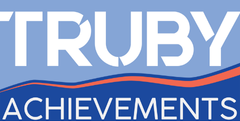Most business owners face recurring employee problems that drain time, energy, and profit — but the real issue isn’t the people, it’s the infrastructure that supports them. This article explains why those issues persist and how small, strategic shifts in leadership can rebuild your company’s foundation for performance, profit, and peace of mind.
Table of Contents
When Employee Problems Leave You Pulling Your Hair Out

You know that feeling.
You walk into work ready to move the business forward — but before your first cup of coffee is gone, you’re already putting out fires. Someone didn’t show up. Another missed a deadline. A third has an attitude that’s quietly infecting the team.
You’ve coached. You’ve reminded. You’ve even had those uncomfortable “accountability talks.”
And yet — here you are again.
The problems never really go away. They just change faces.
You start to wonder if this is what leadership really means: managing constant frustration, cleaning up after others, and carrying stress no one else sees.
But it doesn’t have to be that way.
After decades of working with leaders and business owners, I’ve discovered something most never realize: It’s not the people who are broken. It’s the infrastructure that’s missing. And once you build the right one, everything changes.
The Real Problem Isn’t People — It’s Infrastructure

Here’s the truth most business owners never hear: employee problems rarely come from employees.
They come from weak or missing infrastructure — the systems, agreements, and protocols that align, organize, and optimize your people.
When a company doesn’t have a unifying Value (your unique selling proposition) or a shared framework that connects everyone to that value, people start improvising. They fill in gaps, make assumptions, and do what seems right in the moment. It works… until it doesn’t.
That’s when deadlines slip, tension rises, and teamwork falls apart.
You’ve probably seen it:
- Two employees argue over who was “supposed” to handle something.
- A good worker underperforms because priorities keep shifting.
- A manager avoids accountability because there’s no shared system to support it.
None of that comes from bad people. It comes from a missing infrastructure — one that should clarify roles, streamline systems, and keep everyone aligned to a common purpose.
When infrastructure is weak, everything feels personal. Feedback sounds like criticism. Accountability feels like blame. Even great employees start protecting themselves instead of the mission.
But when you build a healthy infrastructure — one that connects everyone through alignment, organization, optimization, and growth — clarity replaces confusion.
The same people who once frustrated you become engaged, proactive, and productive.
It’s not magic. It’s leadership that finally works with human nature instead of against it.
Bob’s Story — Seeing the Shift in Action

I once worked with a business owner named Bob.
He ran a small print shop — ten employees, loyal customers, and a mountain of frustration. Every week, something went wrong. Two employees couldn’t get along. Orders were late. Someone always had an excuse.
Bob told me, “I’ve tried everything, Bill. I’ve trained them, reminded them, even raised my voice a few times. Nothing sticks.” He was tired — not just of the problems, but of having to solve them all himself.
So, we didn’t start with discipline or new hires. We started with infrastructure.
First, we aligned the team around one clear purpose — their value to the customer: dependable quality, delivered on time. Then, together, they created a few foundational agreements that organized their work:
- “We meet the deadlines we promise.”
- “We leave our workspace ready for the next person.”
- “We communicate immediately if something will impact delivery.”
It didn’t take months. It took days.
Two weeks later, Bob called me and said, “I don’t get it. The same people — the ones driving me crazy — are now on top of everything. They’re laughing again. They’re engaged.”
He didn’t replace anyone. He simply built an infrastructure that aligned and organized his existing team. That small shift unlocked their motivation, efficiency, and pride. That’s when everything started to work — and keep working.
How to Start Fixing Employee Problems

You don’t need a massive overhaul. Big change starts with one intentional step: build clarity into your infrastructure.
Here’s how to begin, using the first phases of the Truby Management System:
- Align — Identify your company’s Value. What makes you distinct? When everyone rallies around that Value, decisions become easier, and priorities align.
- Organize — Clarify expectations and workflows. What exactly does “done right” look like? Define it together.
- Optimize — Create simple systems to support consistency — here’s one example, “We confirm every order before end of day.” This builds reliability and trust.
- Grow — As things start working smoothly, keep refining and improving. Growth happens naturally when alignment, organization, and optimization are in place.
Do that, and you’ll notice something almost immediately: The same people who once drained your time begin taking ownership. Tension drops. Initiative rises.
That’s the power of infrastructure — it transforms people problems into performance potential.
Take the Next Step – Download Your Free Guide

If this sounds familiar, you’re not alone. Nearly every business owner and leader I’ve worked with has faced the same struggle — and once they built the right infrastructure, everything changed.
The first steps you’ve read here will get you started. But to make those improvements stick, you need a clear, proven process.
That’s why we created the free business guide: How to Deal With Employee Problems – Turn Your Biggest Headache Into Your Greatest Asset.
Inside, you’ll learn:
- How to identify the real source of recurring people problems.
- A step-by-step framework to rebuild trust, accountability, and teamwork.
- Tools and scripts you can use immediately.
It’s the same process we’ve used for decades to help teams become self-managing and high-performing — often in just a few weeks.
Download your free guide:
How to Deal With Employee Problems – Turn Your Biggest Headache Into Your Greatest Asset
Because your people aren’t the problem. They’re your greatest potential — once they’re supported by a strong, aligned, optimized infrastructure.



0 Comments